Addictions
Field of death: Art project highlights drug crisis’ impact on tradespeople
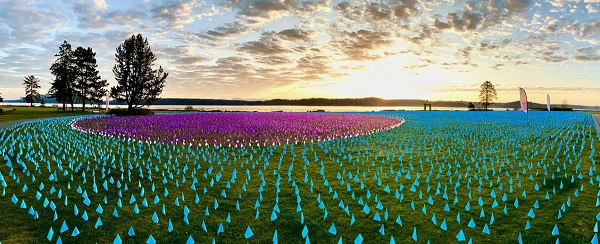
City Counsellor Ron Kerr’s Blue Hat Memorial Project at the Tyee Spit in Campbell River, B.C., April 2025. | Courtesy of Ron Kerr
By Alexandra Keeler
The drug crisis is really a men’s mental health crisis, says Ron Kerr, the artist and city councillor behind a visually staggering project
Fifty thousand flags blanket the north end of Tyee Spit in Campbell River, B.C. — a staggering visual memorial to the lives lost in Canada’s opioid crisis since it was declared a public health emergency in 2016.
Called the Blue Hat Memorial Project, the installation spans nearly the length of a football field. It features 36,000 blue flags to represent the men and boys killed by toxic drugs, and 14,000 purple flags for women and girls.
“The actual installation does something you can’t do by just reading [about it],” said Ron Kerr, the artist behind the project. Kerr is also a city councillor in Campbell River, a city of 38,000 on the northeast coast of Vancouver Island.
“You’re visually seeing it, and it’s going right to your heart and creating an emotional response,” he said.
The installation’s name is a reference to the blue hard hats worn by newcomers or trainees on blue-collar job sites. Kerr says one of his aims is to draw attention to how the drug crisis has acutely affected working-class men. Between one-third and half of the individuals who died of opioid poisoning worked in the skilled trades, according to public health data.
Kerr, who has worked closely with tradesmen as an artist and advocate in men’s peer support groups, describes many of these tradesmen as “functional addicts” — employed, seemingly stable individuals who privately use drugs to manage pain or depression without others noticing.
“They are doing drugs at home or in their garage, and people don’t even know that they are [because] they’re functional, they’re working,” he said. “They’re able to control their depression or occupational injury through opiate drugs.”
Tradespeople are especially vulnerable to developing substance use disorders due to the physical demands, long hours and high injury rates associated with their work. Many use stimulants to stay alert or opioids to manage pain or cope with isolation in remote jobs.
“There is an expectation to get out the next day and get to work, no matter how you’re feeling,” said Kerr. “Self-medication is the easiest way to do it — a slippery slope from Tylenol to prescription drugs.”
A 2021 survey by the Construction Industry Rehabilitation Plan found that one in three B.C. construction workers reported problematic substance use. More than two-thirds screened positive for PTSD.
Loneliness is another major driver. Experts say men often avoid seeking help due to stigma, leading to further isolation.
“The opposite of addiction is connection,” said Kerr. “Men don’t have a place to go when they can’t deal with their issues, so they self-medicate.”
A pattern flipped
When Kerr first launched the installation in August 2024, he and a team of volunteers initially planted only blue flags. But in response to questions like, “Where are the women?”, he added purple flags this year.
“It was a blending — to give them their due,” he said.
Kerr’s installation sits on the unceded territory of the Liǧʷiłdax̌ʷ people, including the Wei Wai Kum Nation, a nation of nearly 1,000 people.
Wei Wai Kum’s chief, Chris Roberts, told Canadian Affairs he does not want the project’s focus on men to overshadow other key trends.
In B.C., Indigenous people die from drug poisoning at nearly seven times the rate of the general population. And within many Indigenous communities, the gendered pattern is at odds with national trends: women are dying at even higher rates than men.
“The opioid crisis has significantly affected my community as well, and it continues to — we are overrepresented as Indigenous people,” Roberts said.
“In our case, the gender split is much more balanced,” he added.
 |
An aerial view of the Blue Hat Memorial Project in Campbell River, B.C., April 2025. | Courtesy of Ron Kerr
‘Inadequate recovery’
Currently, Campbell River — the overdose epicentre of northern Vancouver Island — has only one aging recovery centre.
“[The city is] a hub for the whole North Island, but we have very little in terms of recovery,” said Kerr. “[There is] just one inadequate recovery centre in a 50-60 year old house with tiny rooms.”
Kerr is critical of how B.C. has implemented harm reduction strategies. He says policies such as drug decriminalization and safer supply were launched without the recovery infrastructure needed to make them effective.
“[Portugal] legalized drugs too, but the most important thing was that they provided the recovery services for them — they went all in,” said Kerr. “In this province, they just haven’t spent the money and time on doing that.”
Kerr also worries too many resources have gone to safer supply programs, without offering drug users a way out.
“When you get a person in full-blown addiction, and you’re giving them all the drugs they need, the food they need, and the clothes and shelter, what’s going to stop them from carrying on?” he said.
Subscribe for free to get BTN’s latest news and analysis – or donate to our investigative journalism fund.
Kerr wants his installation to draw attention to the need for more recovery-oriented solutions, such as treatment centres and housing. In particular, he points to a lack of affordable or free housing for people to live in after initial recovery.
“What you need is a good, clear off-ramp,” said Kerr. “They need to have recovery options that are either affordable or free so they can get off the road that they’re on.”
Chief Roberts agrees. Wei Wai Kai Nation is currently converting the former Tsạkwạ’lutạn resort into a 40-bed healing centre that will combine medical care with culture-based recovery.
“We’ve made investments to acquire properties and assets where people can go and reconnect with the land, the territory and their identity as a Ligwilda’xw person,” Roberts said.
Kerr says he will consider the Blue Hat Memorial a success if it leads to more funding and momentum for these types of recovery-oriented services.
The Blue Hat Memorial remains in Campbell River until the end of April. But Kerr, who previously re-created the installation in Nanaimo and West Vancouver, says he remains committed to doing more projects.
“I’ve got no expectation of senior government to come along and do this without a groundswell of grassroots people saying ‘we need this,’ and pushing government to do it,” said Kerr.
“I’m going to keep having the installation until that happens.”
This article was produced through the Breaking Needles Fellowship Program, which provided a grant to Canadian Affairs, a digital media outlet, to fund journalism exploring addiction and crime in Canada. Articles produced through the Fellowship are co-published by Break The Needle and Canadian Affairs.
Subscribe to Break The Needle.
Our content is always free – but if you want to help us commission more high-quality journalism, consider getting a voluntary paid subscription.
Addictions
BC premier admits decriminalizing drugs was ‘not the right policy’
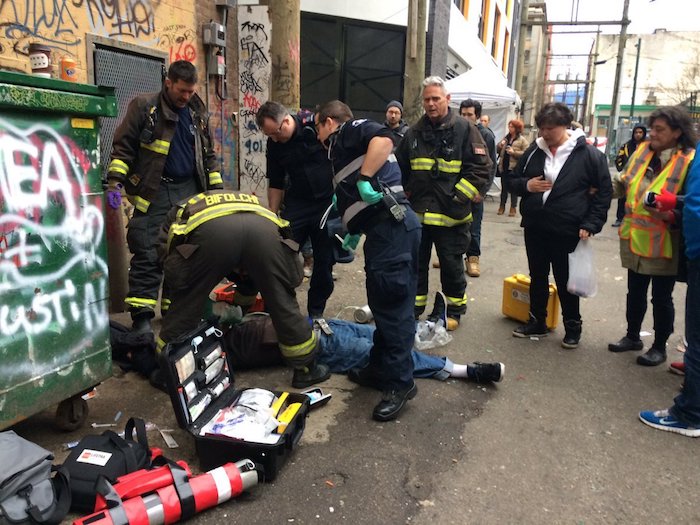
From LifeSiteNews
Premier David Eby acknowledged that British Columbia’s liberal policy on hard drugs ‘became was a permissive structure that … resulted in really unhappy consequences.’
The Premier of Canada’s most drug-permissive province admitted that allowing the decriminalization of hard drugs in British Columbia via a federal pilot program was a mistake.
Speaking at a luncheon organized by the Urban Development Institute last week in Vancouver, British Columbia, Premier David Eby said, “I was wrong … it was not the right policy.”
Eby said that allowing hard drug users not to be fined for possession was “not the right policy.
“What it became was a permissive structure that … resulted in really unhappy consequences,” he noted, as captured by Western Standard’s Jarryd Jäger.
LifeSiteNews reported that the British Columbia government decided to stop a so-called “safe supply” free drug program in light of a report revealing many of the hard drugs distributed via pharmacies were resold on the black market.
Last year, the Liberal government was forced to end a three-year drug decriminalizing experiment, the brainchild of former Prime Minister Justin Trudeau’s government, in British Columbia that allowed people to have small amounts of cocaine and other hard drugs. However, public complaints about social disorder went through the roof during the experiment.
This is not the first time that Eby has admitted he was wrong.
Trudeau’s loose drug initiatives were deemed such a disaster in British Columbia that Eby’s government asked Trudeau to re-criminalize narcotic use in public spaces, a request that was granted.
Records show that the Liberal government has spent approximately $820 million from 2017 to 2022 on its Canadian Drugs and Substances Strategy. However, even Canada’s own Department of Health in a 2023 report admitted that the Liberals’ drug program only had “minimal” results.
Official figures show that overdoses went up during the decriminalization trial, with 3,313 deaths over 15 months, compared with 2,843 in the same time frame before drugs were temporarily legalized.
Addictions
Canada must make public order a priority again
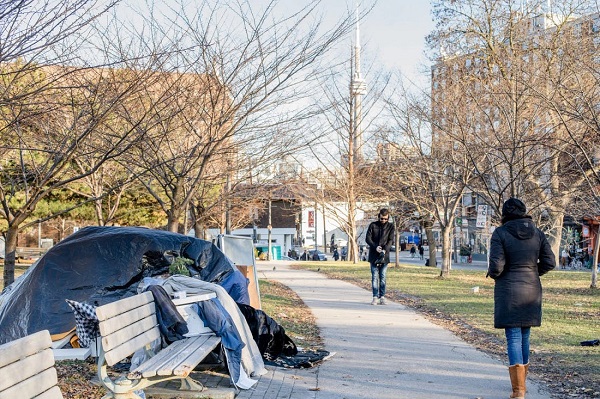
A Toronto park
Public disorder has cities crying out for help. The solution cannot simply be to expand our public institutions’ crisis services
[This editorial was originally published by Canadian Affairs and has been republished with permission]
This week, Canada’s largest public transit system, the Toronto Transit Commission, announced it would be stationing crisis worker teams directly on subway platforms to improve public safety.
Last week, Canada’s largest library, the Toronto Public Library, announced it would be increasing the number of branches that offer crisis and social support services. This builds on a 2023 pilot project between the library and Toronto’s Gerstein Crisis Centre to service people experiencing mental health, substance abuse and other issues.
The move “only made sense,” Amanda French, the manager of social development at Toronto Public Library, told CBC.
Does it, though?
Over the past decade, public institutions — our libraries, parks, transit systems, hospitals and city centres — have steadily increased the resources they devote to servicing the homeless, mentally ill and drug addicted. In many cases, this has come at the expense of serving the groups these spaces were intended to serve.
For some communities, it is all becoming too much.
Recently, some cities have taken the extraordinary step of calling states of emergency over the public disorder in their communities. This September, both Barrie, Ont. and Smithers, B.C. did so, citing the public disorder caused by open drug use, encampments, theft and violence.
In June, Williams Lake, B.C., did the same. It was planning to “bring in an 11 p.m. curfew and was exploring involuntary detention when the province directed an expert task force to enter the city,” The Globe and Mail reported last week.
These cries for help — which Canadian Affairs has also reported on in Toronto, Ottawa and Nanaimo — must be taken seriously. The solution cannot simply be more of the same — to further expand public institutions’ crisis services while neglecting their core purposes and clientele.
Canada must make public order a priority again.
Without public order, Canadians will increasingly cease to patronize the public institutions that make communities welcoming and vibrant. Businesses will increasingly close up shop in city centres. This will accelerate community decline, creating a vicious downward spiral.
We do not pretend to have the answers for how best to restore public order while also addressing the very real needs of individuals struggling with homelessness, mental illness and addiction.
But we can offer a few observations.
First, Canadians must be willing to critically examine our policies.
Harm-reduction policies — which correlate with the rise of public disorder — should be at the top of the list.
The aim of these policies is to reduce the harms associated with drug use, such as overdose or infection. They were intended to be introduced alongside investments in other social supports, such as recovery.
But unlike Portugal, which prioritized treatment alongside harm reduction, Canada failed to make these investments. For this and other reasons, many experts now say our harm-reduction policies are not working.
“Many of my addiction medicine colleagues have stopped prescribing ‘safe supply’ hydromorphone to their patients because of the high rates of diversion … and lack of efficacy in stabilizing the substance use disorder (sometimes worsening it),” Dr. Launette Rieb, a clinical associate professor at the University of British Columbia and addiction medicine specialist recently told Canadian Affairs.
Yet, despite such damning claims, some Canadians remain closed to the possibility that these policies may need to change. Worse, some foster a climate that penalizes dissent.
“Many doctors who initially supported ‘safe supply’ no longer provide it but do not wish to talk about it publicly for fear of reprisals,” Rieb said.
Second, Canadians must look abroad — well beyond the United States — for policy alternatives.
As The Globe and Mail reported in August, Canada and the U.S. have been far harder hit by the drug crisis than European countries.
The article points to a host of potential factors, spanning everything from doctors’ prescribing practices to drug trade flows to drug laws and enforcement.
For example, unlike Canada, most of Europe has not legalized cannabis, the article says. European countries also enforce their drug laws more rigorously.
“According to the UN, Europe arrests, prosecutes and convicts people for drug-related offences at a much higher rate than that of the Americas,” it says.
Addiction treatment rates also vary.
“According to the latest data from the UN, 28 per cent of people with drug use disorders in Europe received treatment. In contrast, only 9 per cent of those with drug use disorders in the Americas received treatment.”
And then there is harm reduction. No other country went “whole hog” on harm reduction the way Canada did, one professor told The Globe.
If we want public order, we should look to the countries that are orderly and identify what makes them different — in a good way.
There is no shame in copying good policies. There should be shame in sticking with failed ones due to ideology.
Our content is always free – but if you want to help us commission more high-quality journalism,
consider getting a voluntary paid subscription.
-

 International2 days ago
International2 days agoPoland’s president signs new zero income tax law for parents with two children
-

 Business2 days ago
Business2 days agoFord’s Whisky War
-

 Agriculture14 hours ago
Agriculture14 hours agoIs the CFIA a Rogue Agency or Just Taking Orders from a Rogue Federal Government?
-
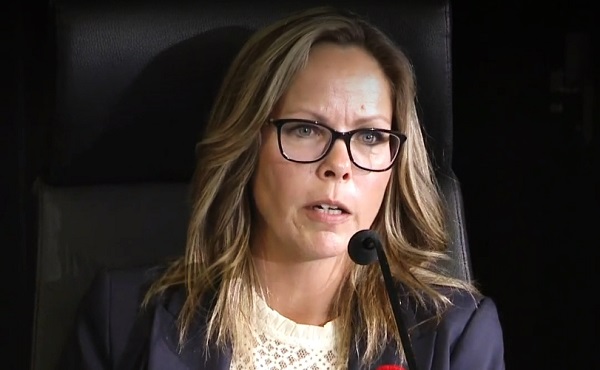
 COVID-192 days ago
COVID-192 days agoFreedom Convoy leader Tamara Lich says ‘I am not to leave the house’ while serving sentence
-

 Focal Points2 days ago
Focal Points2 days agoTrump Walks Back His Tomahawk Tease from Zelensky
-

 Automotive1 day ago
Automotive1 day ago$15 Billion, Zero Assurances: Stellantis Abandons Brampton as Trudeau-Era Green Deal Collapses
-

 Business23 hours ago
Business23 hours agoTrump Blocks UN’s Back Door Carbon Tax
-
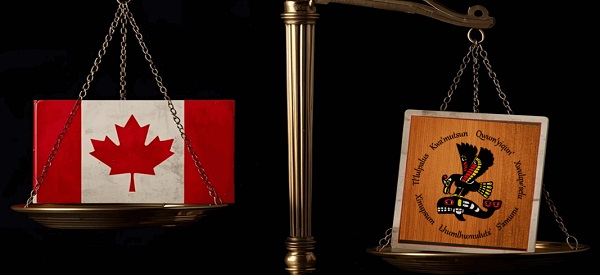
 Business22 hours ago
Business22 hours agoJudges are Remaking Constitutional Law, Not Applying it – and Canadians’ Property Rights are Part of the Collateral Damage








